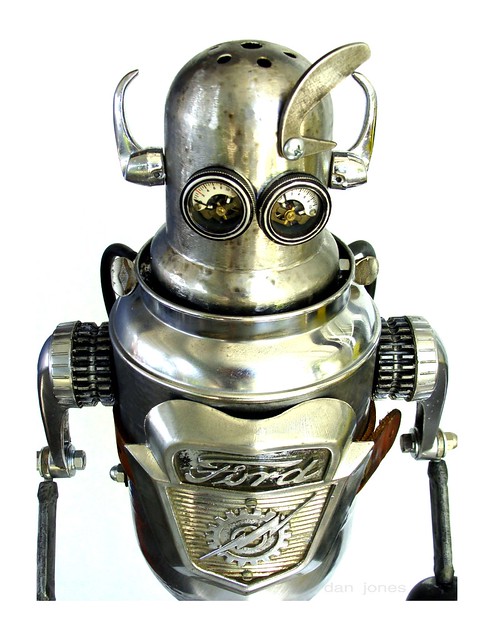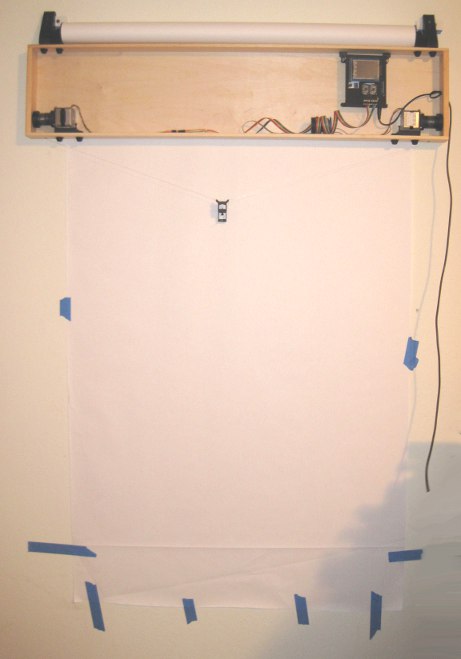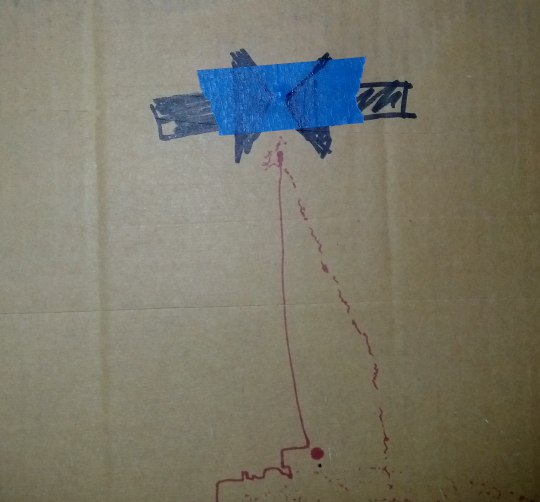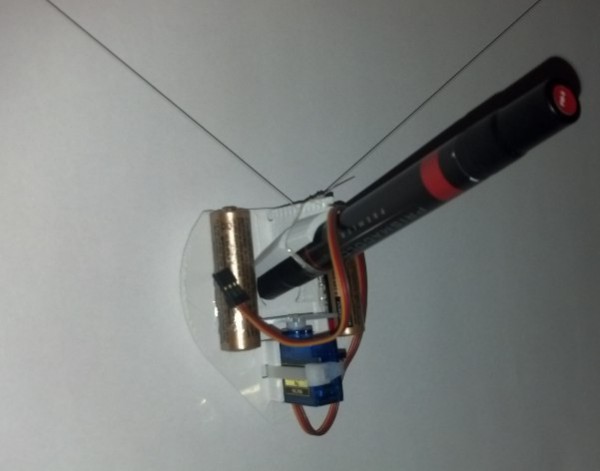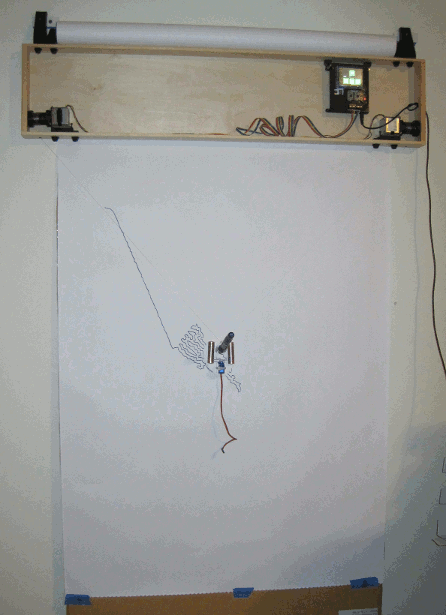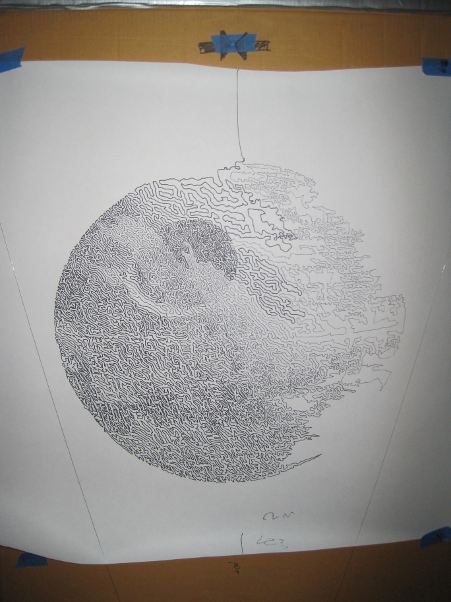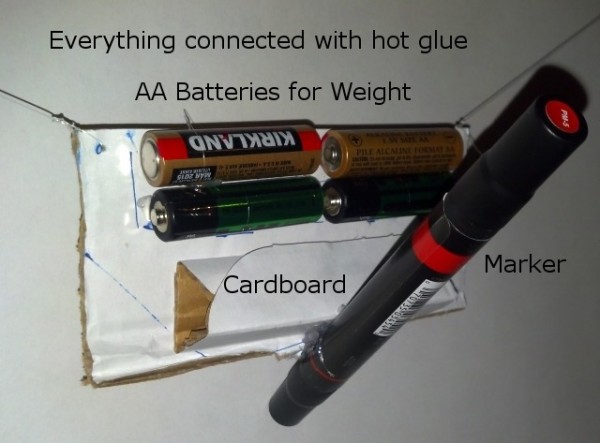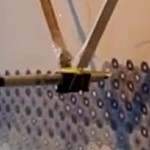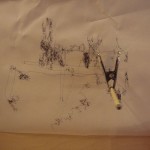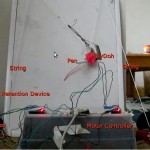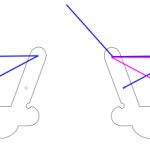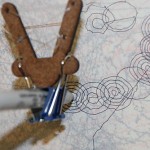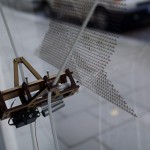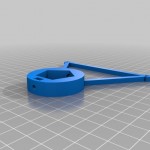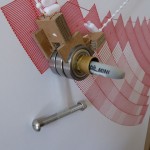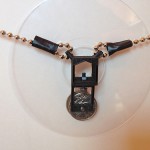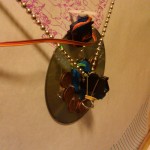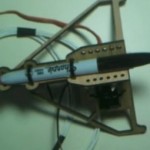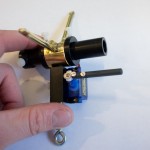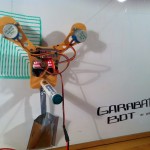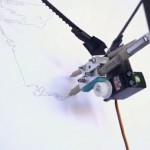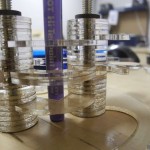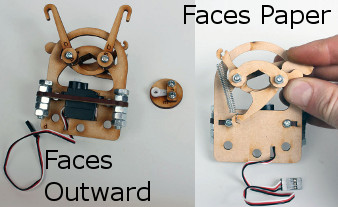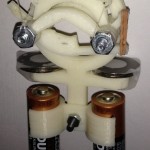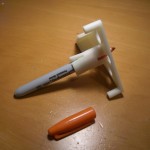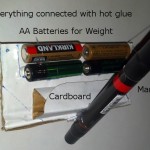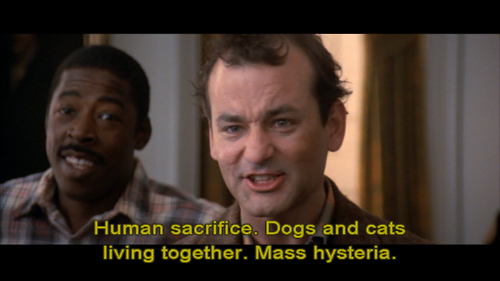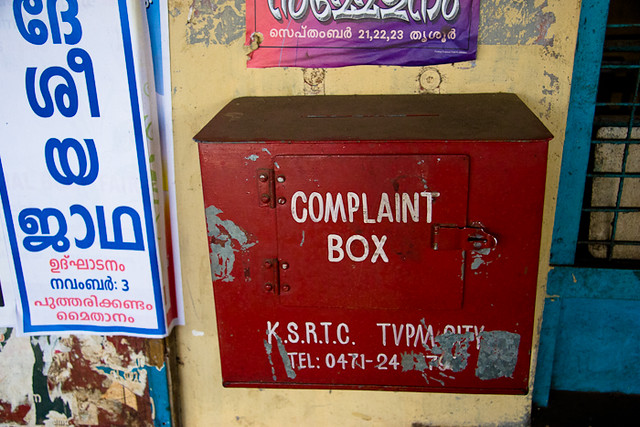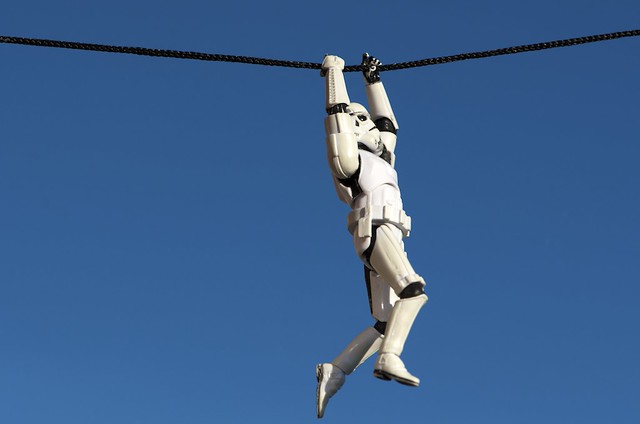
Just hanging out
In discussing Sandy Noble’s Polargraph pen holder I mentioned how his design is optimized so that the point where the two cords meet is always the same as where the pen tip meets the paper. In the comments, he explained his rational, “So the pen tip is always at the tip of the hanging triangle, and there’s no distortion that way.” My response was that “…if the pen holder has a single ‘hanging triangle’ point in it with the pen tip a constant distance from that ‘hanging triangle point,’ the drawings should appear identical to those created at the ‘hanging triangle point’ – just offset by the constant distance.”
This morning Sandy updated his site with a post explaining, using several diagrams, the basis for his prior theory and how he came to agree with my point. (Not that he’s changing his pen holders… ;) )
Without as much fancy-schmancy maths and geometry, I figured I would explain the thought experiment I used to conclude that a pen tip that is always a constant distance and position from the “hanging triangle point” will always produce an accurate distortion-free drawing. To help illustrate these thought experiments, I’ve enlisted the help of Yoda. “Hi Yoda!”

Fig 1: Yoda, being drawn by a drawing robot
In the picture above, Yoda is being drawn by a drawing robot.

Fig 2: Yoda drawing, annotated
Above, I’ve labeled the important parts of the drawing. On the top left “Motor A,” on the top right “Motor B,” which are attached by cords to the pen holder indicated by the dark blue line. Here, I’ve shown Yoda as he would be drawn by a drawing robot, where the robot then draws two more points.
Let’s say, because we’re feeling whimsical today, we want to add a second pen to our pen holder. We’ll use a red pen and affix it below the blue pen in such a way that the red pen will always be directly below the blue pen by the same distance.

Fig 3: Another pen
For the moment let’s pretend the red pen is capped so it won’t leave a mark. Now we’ll try to predict the position of the red pen at different points along the original drawing.

Fig 4: Where’s the red pen?
It turns out this task is pretty easy. The red pen, at any given point during the Yoda drawing, will always be directly below the blue pen by the same exact distance between the two pens. Okay, now let’s draw Yoda again – this time with the red cap off.

Fig 5: Double vision
We get two Yodas! How awesome is that! The reason I mentioned calligraphy pens in the title of this post is because it shows another way to think about this process. When we write with a calligraphy pen we don’t have one end of the pen wildly distorted – in theory the two points on the calligraphy pen are always a constant distance from one another and moving together (as long as we don’t rotate the pen when we write). You could imagine instead of a blue and red pen above, we’ve put a single calligraphy pen that’s as wide as the black line representing the distance between the two pens above. The resulting drawing would look like a Yoda – that had been smudged downwards by the same distance.
Let’s now draw Yoda again, but capping the blue pen and still tracking where the blue pen would be.

Fig 6: Not using the blue pen
We should end up with a result very similar to Fig 4. It’s the same Yoda, only red and shifted down from the original blue Yoda by the distance between the two pens.
Let’s draw Yoda again – this time we’ve still got a pen holder which has the cord from Motor A meet Motor B at exactly one point. As Sandy points out, this is really easy to do when you aren’t worrying about making that exact point be the same precise point as the pen tip. Directly below point where the two cords meet on the pen holder, we’ll put the red pen. From a functional standpoint, this setup is identical scenario to Fig 6.

Fig 7: Drawing just one red Yoda
Now we have a red Yoda, shifted down on the paper by the distance between the point where the two cords meet and where the red pen touches the paper. It’s important to note that there’s no special magic to having the red pen directly below the point where the cords converge. This pen tip just needs to be a constant distance and position from the cord convergence point at any given time. While it might be more difficult to build a pen holder that holds the pen far off to one side, there’s no reason this wouldn’t work.

Fig 8: Yoda, now in green
The lessons I take from this thought experiment are:
- As long as the pen is a constant distance and constant position from the point where the two cords meet, your drawing will not appear distorted – just shifted by the same constant distance and position.
- When calibrating the robot, the operator would need to calibrate the pen holder position by the cords convergence point – not the pen point. This means that the preview in your software won’t match exactly the position of your drawing on the paper.
- While not part of the thought experiment per se, I think we can all agree that the more weight that is not centered on the cord convergence point, the more likely the pen holder is to sway.
- I’m willing to defer to Sandy’s experience that pen holders that do not have the cord convergence point the same as the pen tip are, “Easier to design, easier to build, and cheaper, far, far cheaper.”
Thanks Yoda!
P.S. Just in case you’re wondering – the reason that SVG of Yoda above is so large is because it includes the full TSP version of Yoda I’m getting ready to draw. :)
Default Series Title

